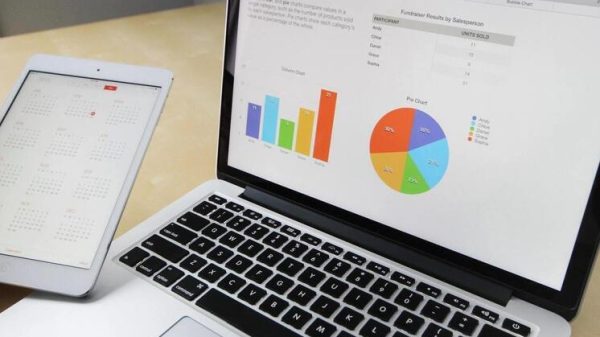The money has become too much to ignore and so bitcoin and cryptocurrencies are back in the news. You may have heard about Ethereum, a cryptocurrency that has risen in value by more than 2,500% over the course of 2017. Or maybe you’ve heard about one of the many smaller cryptocurrencies that raised hundreds of millions of dollars in the first few days they were on sale, during their “initial coin offering”. Or you’ve just spotted that bitcoin, which made headlines in 2013 for hitting a high of $200, is now worth nearly $7,000 (£5,250), making a lot of people very rich in the process.
Are these cryptocurrencies simply speculative bubbles or will they actually transform our financial system? It’s time to answer a few common questions about this new technology – and assess whether a lot of people have just pulled off the investment of their lifetime or made a huge mistake.
What actually is bitcoin?
Bitcoin is a cryptocurrency, the first and still the biggest example of its type. At its core, it’s a new form of digital asset, created through a canny combination of encryption (the same technology that protects WhatsApp from eavesdropping) and peer-to-peer networking (which allowed music piracy to blossom in the 00s through services such as Kazaa).
If you own a bitcoin, what you actually control is a secret digital key you can use to prove to anyone on the network that a certain amount of bitcoin is yours.
If you spend that bitcoin, you tell the entire network that you have transferred ownership of it and use the same key to prove that you are really you. In that respect, your key is similar to a password that allows you access to your money, except with no possibility of resetting your key if you lose it. Anyone else who manages to discover your key would gain total, irreversible control over your cash. The history of all the transactions made is a lasting record of who owns which bitcoin: that record is called the “blockchain”.
What are its advantages over money created by central banks?
Bitcoin advocates will point to a number of possible advantages, from the ability to use the blockchain to track things other than simple money to the built-in support for “smart contracts”, which execute automatically when certain conditions are met.
But the biggest advantage, and the only one everybody agrees on, is that bitcoin is decentralised and so extremely resistant to censorship.
Although it’s possible to observe a bitcoin payment in process, it’s not practicably possible to stop it. That makes it radically different from conventional banking, where banks can, and do, intervene to freeze accounts, vet payments for money laundering or enforce regulations. That has made it a haven for activities from cybercrime and drug trading to enabling international payments to closed economies and supporting radically off-grid living.
So will I need to start taking bitcoin to Tesco for my weekly shop?
Unlikely. Bitcoin has one major hurdle to being used at scale for physical transactions: payments are only confirmed once every 10 minutes (and that’s when everything’s working well; in practice, it can take days for confirmation to occur). This means theoretically that it’s possible to spend a bitcoin, then walk next door and spend exactly the same bitcoin at a second establishment. Only one of those transactions will ultimately be confirmed, leaving the other place out of pocket.
More generally, bitcoin has limited advantages for payments between big companies and normal consumers. It’s no easier or quicker than any other mobile payment, it introduces considerable volatility to your daily holdings (or a sizable hedging cost to guard against swings in the value of the currency) and remains a pain to integrate with the conventional banking system.
That hasn’t stopped some large companies experimenting. Microsoft accepts bitcoin for payments on its online store and PayPal offers integration for merchants to offer the cryptocurrency as a payment option.
Is it really the new gold?
Probably not, but the comparison isn’t completely spurious. One of the interesting quirks of bitcoin is that there will never be more than 21m of them in existence. That figure is written into the currency at its source code and is a function of how the network rewards those people who provide the computing power (called “miners” – because of that gold analogy) that keeps it ticking over.
Every 10 minutes, one of the miners is rewarded with a sum of bitcoin. That reward doesn’t come from anyone: it is created out of thin air and added to the bitcoin wallet of the miner. Initially, that reward was 50 bitcoin, but it gets halved every four years, until, midway through the 22nd century, the last bitcoin ever will be produced.
For a certain type of economist, that hard limit is an extremely good thing. If you believe that the key problem with the financial system over the past 100 years has been that central banks print money, creating inflation in the process, then bitcoin provides an alternative ecosystem where inflation is capped forever.
Does it really create more carbon dioxide than Ecuador?
Yup. And then some. Citibank estimates that the bitcoin network will eventually consume roughly the same amount of electricity as Japan. The problem is that the mining process is incredibly wasteful – and deliberately so. Those miners are all competing to be the first to solve an arbitrarily difficult computing problem, one that takes enormous amounts of processor cycles to do and still comes down mostly to luck. The computer that does solve it first, every 10 minutes, gets a sizable reward – currently in the region of £65,000 in bitcoin – but every computer, not just the winner, has had to spend that processing time to do the maths.
The reason for the mining requirement, which is essentially asking a computer to continue rolling a dice until it rolls a few thousand sixes in a row, is that it ensures that no single person can dictate what happens on the network. The proof that the miner has solved the problem is what it uses to claim its reward, but it also becomes the seal that it uses to verify the last 10 minutes of transactions.
“I, miner number 2357398, have solved this problem, and the answer is [extremely long string of digits]. By the authority vested in me by the network, I declare that the following list of transactions to be confirmed:” and then they list every transaction that they have heard about in the last ten minutes.
From that point on, every machine on the network begins solving a new problem, set by the last miner. But, crucially, they only do so if they agree with the miner’s list of transactions. That means that even if you do win the race, it’s not enough to simply insert your own lies in the block, and declare that everyone sent you all their money, because everyone else will simply ignore you and listen to the next miner in the chain.
(The reward itself isn’t really necessary to Bitcoin, but it’s there to ensure that miners have some reason to throw their electricity at the network. In the long-run, the hope is that voluntary transaction fees for quicker confirmations will take over that role.)Because the problem is so processor-intensive and so randomly rewarded, it’s prohibitively expensive – in electricity and computing power – to attempt to fake it. But it’s also a vast use of electricity, worldwide, used to do little other than satisfy an arbitrary requirement for spending money.
Is bitcoin the only cryptocurrency?
Not at all, although it’s still the most valuable. After bitcoin’s creation in 2009, a number of other cryptocurrencies sought to replicate its success by taking its free, public code and tweaking it for different purposes.
Some had a very defined goal. Filecoin aims to produce a sort of decentralised Dropbox; as well as simply telling the network that you have some Filecoins, you can tell it to store some encrypted data and pay Filecoins to whoever stores it on their computer.Why would you want that? Well, it again comes back to censorship resistance. If you store something on your Dropbox that the company doesn’t like, it can just delete the data and ban you. With Filecoin, it’s impossible to tell what’s being stored, and impossible to force the network to block any given user anyway.
Others are more nebulous. Ethereum, now the second biggest name after bitcoin, is essentially a cryptocurrency for making cryptocurrencies. Users can write “smart contracts”, effectively programs that can be run on the computer of any user of the network if they’re paid enough Ether tokens.Think, for instance, of offering a small sum every time someone responds to a particular signal with today’s headlines: you’ve built a decentralised news website, then. Or you could write a small program and reward someone every time it’s run: that way, you’ve created a decentralised cloud computer.
As a category, these new cryptocurrencies are increasingly referred to as “decentralised apps”, or “dapps”, with the focus being not on the specific currency used to make the system work, but on its overall goal.It might even be best not to think of the coins that lie at their heart as “currency” at all: when the token could represent a services contract, a land registry record, or the right to five minutes of computing time, the analogy to pounds and dollars has rather broken down.
What is driving the price rise?
That’s the billion-dollar question. A few different explanations have been offered.
Some fans will say that the price rise is simply a correction to the natural rate of growth for bitcoin. Sure, they argue, the technology has had its booms and its busts, but if it is to become a worldwide digital currency, its value will definitely be higher than it is today. In that narrative, the price rise is simply a reflection of the growing acceptance of bitcoin.
Other fans point to the growth in novel cryptocurrencies. Because of bitcoin’s maturity, and its focus on finance, if you want to buy some Ether, some Filecoins or any other cryptocurrency, it’s usually easiest to buy bitcoin with your conventional currency and then trade bitcoin for the cryptocurrency of your choice. Naturally, then, booms in those currencies are leading to booms in bitcoin itself, as more and more people attempt to buy into the whole system.
Then there’s the bubble argument. There, people argue that the majority of the price rise is due simply to people buying bitcoin in the hope that they can sell it later for a profit. A classic speculative bubble, some people will make a lot of money – while others will lose everything.
So is it a bubble?
Few would argue that there isn’t a lot of speculation in the cryptocurrency market. There are adverts on the London underground, and all over Instagram and Facebook, encouraging viewers to “invest in cryptocurrencies” and, judging by the amount of money flowing in to the ecosystem, a lot of people are taking up the offer.
At some point, those people will get flighty and try to cash out their gains. If enough do at once, the price of bitcoin will take such a tumble that it will prompt a run and we’ll see the classic crash.
But the real question is not whether this will happen, but when – and how big the crash is. Three times now, bitcoin has had boom-and-bust cycles that have seen vast amounts of value destroyed, but have still left the currency valued higher than it was before the previous boom began. (Personally, I first called bitcoin a “bubble” in print when one coin was worth $30. After the crash that followed, one coin was worth $120.) It’s not a smooth ride up, but that doesn’t mean it’s a total bubble.
What is a “hard fork”?
As the bitcoin network has grown, it’s hit problems. For dull, technical reasons, the network as it was initially designed struggles to deal with the amount of traffic that flows through it these days, leaving huge delays in the amount of time it takes for a transaction to be confirmed.
In a normal, centralised, business, that wouldn’t be a problem: simply update the software and move on. But a bitcoin update requires convincing every single miner to accept the new software – otherwise, the miners who carry on running the old version are effectively running a completely different currency from those who have updated.
This is known as a “hard fork”, and for the first six years of bitcoin’s life, it was the nightmare every developer tried to avoid. But recently, divisions among the community have become so fractious that multiple hard forks have occurred, all around how to deal with this traffic slowdown.
With names like Bitcoin Classic, Bitcoin Unlimited, and Bitcoin Gold, each claims that it is the true heir to the original vision – but with each fork, the playing field becomes more crowded.
Nothing is destroyed with each fork: if you had 100 bitcoin before Bitcoin Cash split off, after the split you still had 100 bitcoin and you had 100 Bitcoin Cash. But with each fork, the playing field becomes more crowded, more confusing for newcomers, and the overall reputation for (relative) stability becomes more eroded. Another fork, SegWit2x, was due to happen in late November, but its backers decided at the last minute it didn’t have enough support and called it off.
What’s the banking establishment’s view of bitcoin?
It varies greatly. Some, such as JP Morgan Chase head, Jamie Dimon, are extremely dismissive of the whole thing, arguing that the very properties of bitcoin that make it so appealing as a form of digital gold are why it’s doomed to remain a niche prospect. For Dimon and co, the volatility of its exchange rate, lack of any economic oversight to control monetary policy and absence of support from major nation states mean bitcoin can’t ever truly replace pounds and dollars and is therefore a failure.
Few disagree with that conclusion, but some bankers point to other advantages of the technology. The blockchain concept, they say, might be useful in conventional banking too. Forget bitcoin itself and focus instead on the value of a “distributed ledger”. What if all the major banks replaced their normal book-keeping with one shared, but still closed, database? Might that help cut down on fraud and ensure a more level playing field?
And then, of course, there are the advantages of bitcoin that conventional banking can’t hope to compete with — and doesn’t want to. Can a shadow currency exist purely on the back of drug dealing and cybercrime? Quite possibly: both are big businesses, and neither shows any sign of going away.
What’s the latest on the identity of Satoshi Nakamoto?
He’s still a mystery. The pseudonymous founder of bitcoin, Nakamoto appeared out of nowhere in 2008 when he published the white paper that described how his proposed digital currency would work. While he was active in the online community around bitcoin for the first couple of years of the currency’s life, he posted less and less, making his last ever post on 12 December 2010.
Since then, a lot of people have been accused by others of being the real identity behind Nakamoto. Some of those accusations have been farcical – Newsweek fingered a Japanese-American man named Dorian Satoshi Nakamoto as the inventor, leading to a slow-motion car chase around LA before the man had a sushi dinner with one hand-picked reporter, during which he repeatedly referred to “bitcom” and begged to be left alone.
Others have been based on the background discussion around cryptocurrencies at the time: leading thinkers such as Hal Finney and Nick Szabo were named, on the basis of similar areas of research. Both men denied being Nakamoto and pointed out that they were active under their own names at the time bitcoin was launched, with Finney (who died in 2014) being the currency’s second‑ever user.
Only one person has credibly claimed to be Nakamoto himself: Australian computer scientist Craig Wright. In 2016, Wright went public and gave a number of long interviews to the BBC, GQ, the Economist and London Review of Books, in which he claimed that he would provide evidence proving he is Nakamoto. When the evidence was released, however, it was flawed, proving nothing and leading some to accuse him of “scammery”.
Since then, there have been no other major names linked to Nakamoto’s identity and no action on the bitcoin holdings linked to his account, currently worth around $7bn. It is possible the world may never know who invented bitcoin. For many in the field, that’s how it should be.




















































Свежие комментарии